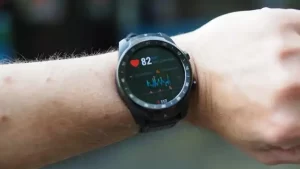Bottled water is destroying our bodies: Microplastics found in human blood
- Statins Lower Blood Lipids: How Long is a Course?
- Warning: Smartwatch Blood Sugar Measurement Deemed Dangerous
- Mifepristone: A Safe and Effective Abortion Option Amidst Controversy
- Asbestos Detected in Buildings Damaged in Ukraine: Analyzed by Japanese Company
- New Ocrevus Subcutaneous Injection Therapy Shows Promising Results in Multiple Sclerosis Treatmen
- Dutch Man Infected with COVID-19 for 613 Days Dies: Accumulating Over 50 Virus Mutations
Bottled water is destroying our bodies: Microplastics found in human blood
- Red Yeast Rice Scare Grips Japan: Over 114 Hospitalized and 5 Deaths
- Long COVID Brain Fog: Blood-Brain Barrier Damage and Persistent Inflammation
- FDA has mandated a top-level black box warning for all marketed CAR-T therapies
- Can people with high blood pressure eat peanuts?
- What is the difference between dopamine and dobutamine?
- How long can the patient live after heart stent surgery?
Bottled water is destroying our bodies! Microplastics found in human blood for the first time…
Microplastics refer to plastic fragments and particles with a diameter of less than 5 mm that are released during the use of plastic products, especially plastic products for food use, such as bottled water, food packaging bags, baby bottles, etc., during the eating process. , Microplastics enter the body with food and pose a threat to our health.
It is estimated that a person consumes about 5g of microplastics per week, the equivalent of eating a credit card.
Studies have successively found the presence . Healthy people contain 20 microplastic particles per 10 grams of feces.
A 2021 study further showed that ingestion of microplastics is harmful to gut health—patients with inflammatory bowel disease have 1.5 times more microplastics in their stool than healthy people, and higher levels of microplastics in stool are associated with diarrhea, Rectal bleeding, abdominal pain symptoms are more obvious.
What is even more worrying is that scientists from the Free University of Amsterdam in the Netherlands found the existence of microplastics in human blood, indicating that microplastics in the human body are no longer as simple as “eating and pulling out”, it may flow with the blood. It affects various organs throughout the body.

The researchers detected five of the most common plastic components in the venous blood of 22 healthy volunteers, including:
- PMMA (polymethyl methacrylate) : polymethyl methacrylate, plexiglass, commonly known as acrylic, many implantable medical materials, including dental and orthopedic consumables, contain PMMA components.
- PP (polypropylene) : polypropylene, widely used in clothing, blankets and other fiber products, medical equipment, automobiles, parts, and also used in food and drug packaging.
- PS (polystyrene) : Polystyrene, thermoplastic, is often used to make various plastic cups and disposable foam lunch boxes that need to withstand the temperature of boiling water.
- PE (polyethylene) : polyethylene, mainly used for food packaging, such as fruits, vegetables, semi-finished products purchased from supermarkets are all PE plastic wrap.
- PET (polyethylene terephthalate) : polyethylene terephthalate, the main raw material for cola bottles and mineral water bottles.
After strictly controlling the possible plastic pollution during sampling, sample preparation and analysis, the researchers detected the presence of microplastics in the blood of nearly 80% of the volunteers (77%, 17/22) . One volunteer had 1.6ug of microplastics per milliliter of blood sample.
The highest proportion was PET, which was detected in the blood of 50% of the volunteers, with a blood concentration of up to 2.4ug/ml, suggesting that most human bodies contain microplastics released from bottled water.
Followed by: PS (36%) , PE (23%) , the highest blood concentrations were 4.8ug/ml and 7.1ug/ml, these two types of plastics are mainly used in plastic wrap, disposable foam lunch boxes, plastic cups, etc., indicating that Microplastics from food packaging also enter the human blood circulation, and the amount entering should not be underestimated.
Finally, PMMA was found in the blood of only 5% of the volunteers, and the presence of PP was not detected in the blood of all the volunteers.

This study was the first to find the existence of microplastics in human blood. Considering that blood circulation extends in all directions in the body, supplying oxygen and nutrients to various organs, and taking away metabolic waste, it is not difficult to imagine that microplastics also flow through the body with the bloodstream.
Microplastics that enter the blood may be excreted through renal filtration or bile excretion, or may be deposited in organs such as the liver and spleen through perforated capillaries.
At present, scientists don’t know how long microplastics will exist in the circulatory system, but the fact that “microplastics are found in blood samples” at least shows that the speed at which the human body removes microplastics is lower than the speed of ingesting them from the outside world.
In wild and laboratory animals, scientists have linked microplastic exposure to infertility, inflammation and cancer.
In the future, more research is needed to prove the impact of microplastics on human health, but it is necessary to reduce the frequency of use of plastic products and prevent them from happening.
references
1. HA Leslie, MJM van Velzen, SH Brandsma, D. Vethaak, JJ Garcia-Vallejo,
MH Lamoree, Discovery and quantification of plastic particle pollution in human blood, Environment International (2022), doi: https://doi.org/10.1016/j.envint.2022.107199
2. APhilipp Schwabl et al. Detection of Various Microplastics in Human Stool: A Prospective Case Series. Annals of Internal Medicine. DOI: 10.7326/M19-0618
Bottled water is destroying our bodies: Microplastics found in human blood
(source:internet, reference only)
Disclaimer of medicaltrend.org
Important Note: The information provided is for informational purposes only and should not be considered as medical advice.



